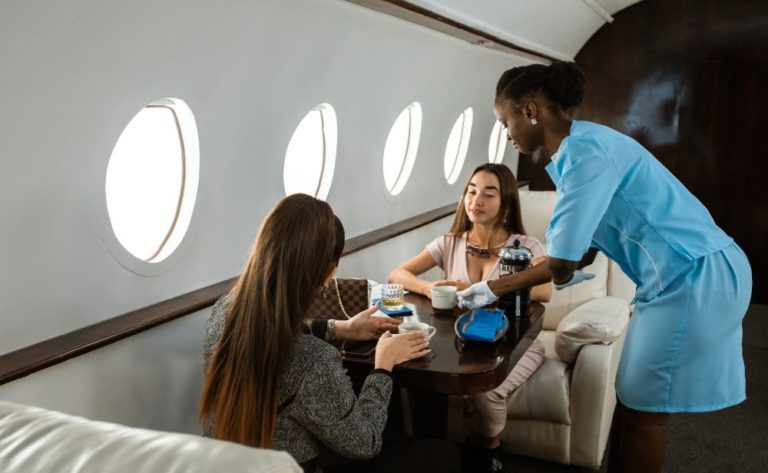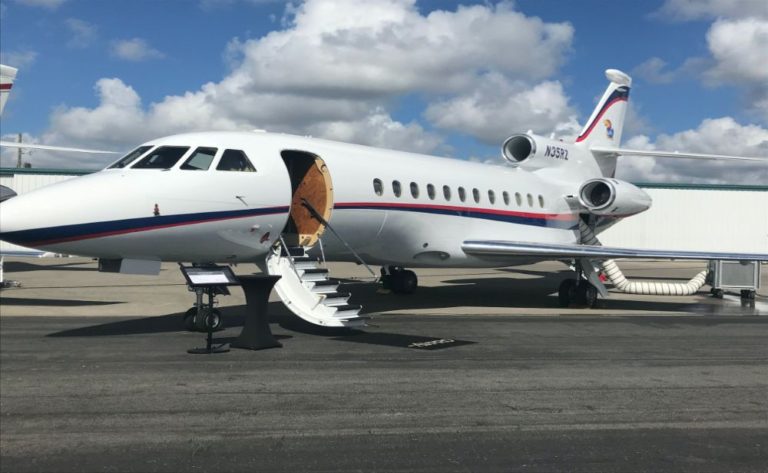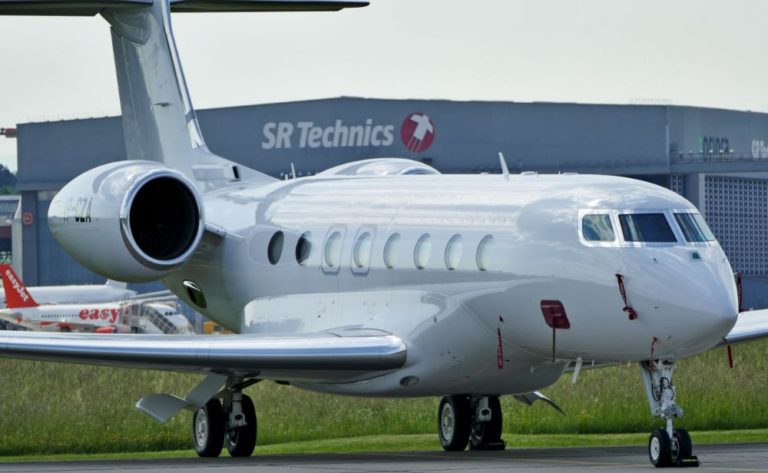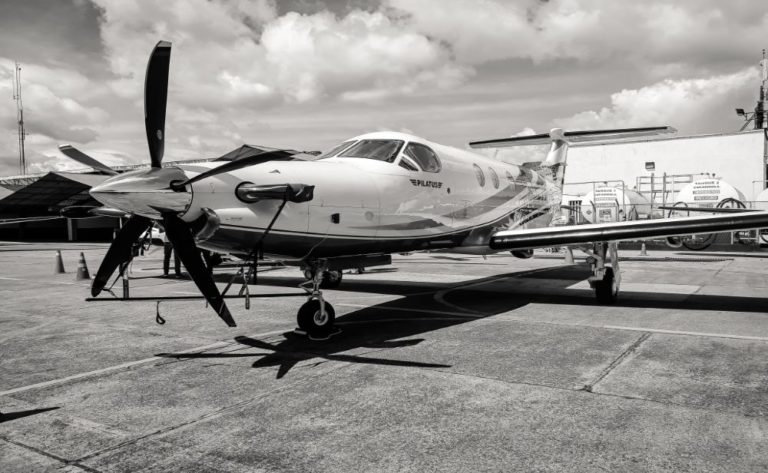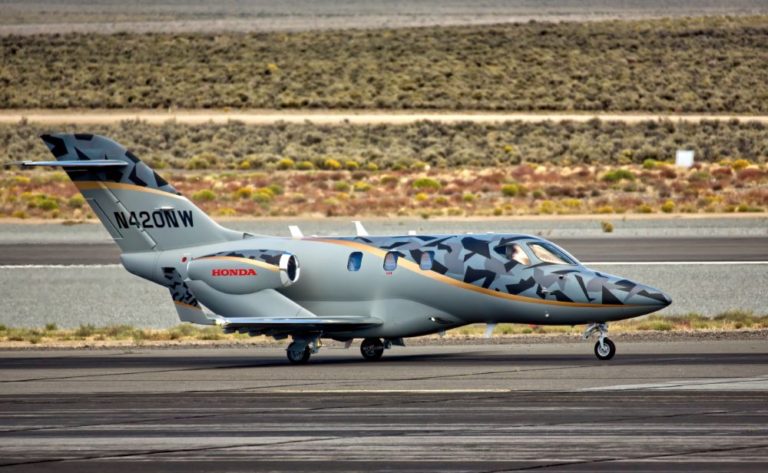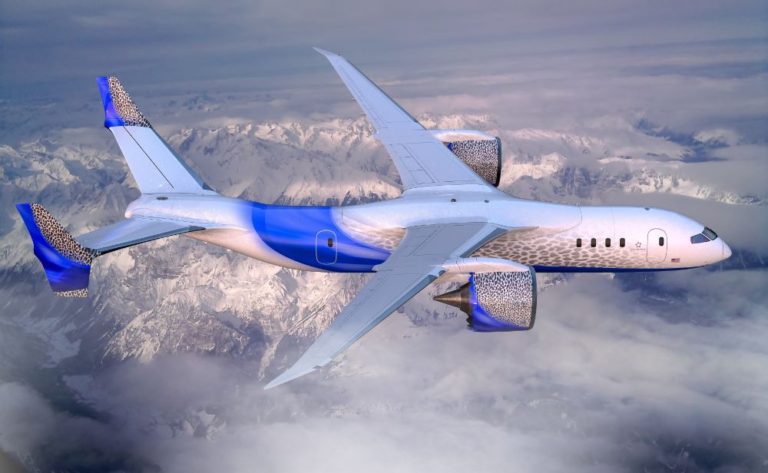We Fly: Cessna Citation CJ4 Gen 2

The 16th of October, 2006 marked the beginning of my tenure with Cessna Aircraft Company as the manager of communications. It was my first time attending this extremely sophisticated event, and it just so happened that I arrived on the day when the media day was being held at the annual Business Aviation Convention and Exhibition hosted by the National Business Aircraft Association.
The booth that was provided by Cessna was opulent and included enormous TV screens that played video clips of Citation jets soaring in front of stunning backdrops while dramatic music played in the background. That day, then-president and CEO Jack Pelton made the announcement that the company would be producing three new airplanes; needless to say, it was a busy day for the communications staff. The Citation CJ4 was one of the airplanes that we introduced to the public.
A Quick Look at the Cessna Citation CJ4 Generation 2
The Citation CJ4 Gen2 is the largest 525-series jet ever manufactured to date, boasting a capacity of up to 11 passengers across its cabin. The all-metal twinjet and its brothers are similar in many ways, including the size of the metal tube that is visible from the outside and the Williams FJ-44 turbofan engines that are housed inside. According to Pelton, “The CJ4 boasts the most powerful performance and payload balance yet in the CJ series.” Additionally, “The CJ4 comes standard with more equipment and passenger comforts than ever before.” Despite the fact that this was the formal launch of the CJ4, Cessna had already received 70 orders for the aircraft.
In February of this year, fifteen years after Pelton first revealed the CJ4, Textron Aviation received authorization to fly the CJ4 Generation 2 aircraft. Cessna, which was acquired by Textron in 1992 and is now one of its business segments, formerly upgraded their products with a straightforward “plus.” On the other hand, Jimmy Beeson, the technical marketing manager at Textron Aviation, stated that Gen2 offers a new and standardised way to “show to our customer base that we are listening to their comments and continuing to invest in our legacy products.” The CJ4 Gen2 lives up to its expectations in this regard.
525 Legacy
Cessna’s factories in Wichita and Independence, Kansas, have a long and illustrious history of producing aircraft, and the Citation CJ4 Gen2 is the latest addition to this illustrious lineage. Clyde Cessna was the driving force behind the nearly 94-year history of the company, which began with decades of extreme success in the single-engine and multiengine piston markets. During this time, the company produced thousands of training aircraft for civilian and military pilots, in addition to owner-flown products.
Cessna Aircraft Company began experimenting with jets in the middle of the 1950s, and its first offering of a business jet was the Fanjet 500. This model would later evolve into the Citation, which was given its name after a thoroughbred racehorse. It was first announced in 1968, and two years later, in 1971, it received FAA certification. Cessna was able to sell 52 Citation 500 aircraft in 1972 thanks to the aircraft’s quick popularity and success. Cessna’s Citation X design team was awarded the Robert J. Collier Trophy in 1996 for producing the first business jet to achieve a cruise speed of Mach 0.92. This accomplishment came on the heels of a long line of highly successful Citation aircraft.
Up to the year 1989, each and every Citation was approved to be flown by a crew of two pilots. But in that same year, Cessna launched the CitationJet, which would subsequently be shortened to “CJ” and serve as an option for owners who desired to fly by themselves. It eventually evolved into a series of CJs that were all granted the coveted 525 type certificate despite having only a single pilot. Textron Aviation’s 525-series models include the CJ3+, CJ4 Gen2 and M2, which is a descendant of the CJ1. These aircraft are currently in production. The first training for the type rating takes around 16 days and consists of both ground and flight sessions. Although pilots do not need to get a new type rating in order to switch from one model to another, they do need to complete around five days’ worth of differences training.
Extraordinary Practicality
The CJ4 is considered to be the flagship model of the 525 series since it has a driving range that crosses the country and a speed that takes you there quickly. The aircraft is propelled by a pair of FJ44-4A fanjets, each of which generates 3,621 pounds of force. This allows the jet to reach heights of up to 45,000 feet and speeds of up to 451 kilometres per hour. It is a very capable piece of equipment, as seen by its payload capacity of 1,122 pounds when fully fueled and its takeoff field length of 3,410 feet.
According to the manufacturer, the CJ4 Gen2 has a maximum range of 2,140 nautical miles when using its long-range cruising engine. You won’t be able to make it all the way from Los Angeles to New York with that, but you won’t have to make any stops if you travel from Los Angeles to Atlanta, from San Diego to Orlando, or from New York to Phoenix either. We had the potential to travel as far south as Costa Rica and as far north as the southernmost tip of Alaska if we had taken off from Denver, which is where I carried out the flying test for this report.
However, the CJ4 Gen2 also has considerable utility for excursions that are not as long. This past summer, the owner of the aircraft that I flew for the flight test, who is also the president and chief executive officer of ADS, a company that offers disaster-response services such as temporary housing and associated facilities, took delivery of his brand-new CJ4 Gen2. He has followed the traditional CJ ownership path, despite the fact that he does not fly the aeroplane in the front seat. In 2017, he began his training to fly a CJ1. Soon after, he upgraded to a CJ2+, and this year, he made the decision to purchase a brand-new CJ4 Gen2 instead. “What took place was that we needed to advance at a more rapid pace,” he explained.
He continued, “Our job is never planned since that is what it means to have a disaster,” thus we never plan anything. He had flown the CJ4 Gen2 for a total of 160 hours after having owned it for a period of three months. A few days before our conversation, he was travelling through five states, including Florida, Virginia, Indiana, Tennessee, and Texas, where he attended five meetings in a single day. There are occasions when he is awarded a contract to put up a camp for 5,000 people within three days’ time. “The plane is essential, or the jobs would go behind,” and this might end up costing the company tens of thousands, if not hundreds of thousands of dollars.
It’s not only how quickly passengers can get from one place to another that’s helped the owner see a profit on his investment. “We have had Wi-Fi in the last two planes, so actually it looks like a tiny office in the back of the jet,” he added. “It looks like a mini office in the back of the plane.” I’ll be able to get back on the computer even before the jet has left the ground.
Investigating the CJ4 Gen2 Vehicle
I boarded the CJ4 Gen2 at Centennial Airport (KAPA), located in the southeastern section of the Denver metropolitan region, on a cool morning in the fall when the air was crystal clear. The new and upgraded airstairs were a welcome sight. The first step of the airstair can be difficult to reach, thus many CJ operators bring a step stool with them. The CJ4 Gen2 comes equipped with an additional step at the base as well as a railing that can be folded out from the doorframe. Because of these two improvements, entering the cabin is now much less difficult. The new lights on the stairs and the cool effect that the logo light would have had if it could have lit up the tarmac under the first step were unfortunately unable to be appreciated since it was too bright.
If you keep heading up the airstair, you will eventually walk right into the seats that face the side of the room. My flight was on an aeroplane that had the optional two-seat sofa in it. Because the backrests detach and fold down, and the backside is made of a material that won’t slide about, as well as having attachment points for a cargo net or straps, the area can be utilised to store more luggage. On the other hand, because the armrest in the middle of the seats protrudes above the folding backrests, you won’t be able to store a particularly large or flat item there. On the other hand, there is no need for that. The aft and forward cargo compartments give a combined capacity of 1,000 pounds, but the bigger closet has an internal capacity of only 40 pounds.
The kitchen, which is located between the entrance and the cockpit, features a recently redesigned countertop that extends to create additional space and pulls out from the wall. There are multiple cabinets, some of which feature drawers and stowaway doors that provide for quick and easy access to whatever is kept in the various sections of the cabinet. A standard power port is installed in one of the cabinets, making it possible to use either a conventional coffee maker or a Keurig or Nespresso device. In comparison, aircraft-compliant coffee systems are not only more expensive but also more time-consuming and easier to break than these, which can be rapidly and inexpensively replaced. You have the option of purchasing a high-power port, and hot tanks come as standard.
The heating and pressurization are both provided by bleed air, but the vapor-cycle machine that controls the air conditioning is powered by electricity. When a pilot or passenger is accustomed to overheating on the ground due to insufficient airflow from an underpowered APU, they will be overjoyed when they are able to plug into a ground power unit and receive fantastic ventilation. While we were going through the interior details, the temperature was 23 degrees Celsius, which is quite warm enough to transform a jet cabin into a sauna. On the other hand, the interior was comfortable and cool.
I went to the restroom despite the fact that it was not yet time to “go.” The Gen2 is equipped with two CoolView skylights, which give the room an airy and welcoming atmosphere despite its compact dimensions. The brand new vanity, which is an available option, has stone surfaces and multiple compartments in which to keep various bathroom essentials. However, the mirror that was hung over the vanity appeared to have some waviness to it, which may have been caused by the way the bulkhead was shaped. An additional practical feature is a fold-down handle that hangs from the ceiling and may be used for hanging clothes. It is possible to service the lavatory itself using an exterior connection.
The chairs and armrests may be pushed right up against the cabin walls, making it easy to stroll through the cabin even though it is not exactly a stand-up cabin for an ordinary human like me. The chairs have been totally revamped, and not only are they exceptionally comfortable, but they also swivel to allow the best possible positioning. Within the cabin and the cockpit, there is an abundant supply of power ports, both USB and conventional, as well as tray tables that fold out from the side walls. Textron Aviation has its own interiors manufacturing facility in Wichita, which means that alterations are conceivable, despite the fact that the CJ4’s seats and six colour schemes likely satisfy the wants and demands of the majority of customers.
The seats in the second row are able to be moved all the way back, creating a gap of at least one foot between the knees of passengers sitting in the club seats. The seats are also able to recline all the way back to a completely flat position, making it a comfortable as well as inviting location to take a nap.
The new window blinds, which can be managed from switches within the cabin via an app that can also change numerous cabin lights, make it far easier to get a good night’s sleep and maximise the opportunity for a proper nap. Because the lights may be turned down, the atmosphere is really relaxing. In addition, the pilots have access to a panel in the galley that allows them to manage the blinds and lights independently. The pleated window coverings feature two sections: one that offers privacy but lets some light in, and another that completely blocks out the light and makes the interior of the cabin pitch black.
I decided against taking a nap and instead made my way toward the front of the ship where the cockpit was located.
The Collins Pro Line 21’s crisp LCD screens are not touchscreens. The FMS is used for data entry, and different control panels can be used to set up the MFDs and PFDs. The FJ44-4A engines are fadec-controlled, which makes starting them and managing them almost as simple as starting a car. The CJ4 Gen2 is certified for single-pilot flights, but it may also be operated by a two-pilot crew, with access to all critical systems and full control from both sides. Through USB connections on the panel, which are concealed behind a small access door, navigation databases are updated. TCAS, XM weather, radar, departure and arrival procedures, taxi diagrams with own ship position, systems diagrams, and a host of other capabilities are among the long list of features. Additionally accessible are digital ATIS and pre-departure clearance capabilities. [Glenn Watson photo]
I sat down next to Textron Aviation pilot Don Woodward while flying the CJ4 Gen2. The fact that I had demoed Woodward in the Cessna TTx around 13 years earlier while we were both working for Cessna added to the excitement of the flight. I was given a choice of seats by Woodward. Normally I would always prefer the left, but as a first officer I have primarily flown jets from the right seat, so I went with that.
My general aviation flying has been dominated by Garmin and Avidyne, but over the past three years of airline flying, I’ve grown to adore the Collins Pro Line 21 avionics package. The Pro Line 21 version in the CJ4 Gen2 is pretty similar, but it differs from the model found in the planes I frequently fly in that it has noticeably clearer LCD screens and a little bit of a different buttonology.
It is a significant transition to move from Garmin to Collins, as a pilot would do if upgrading from, say, the Mustang or other CJ types. The system’s hard buttons and menus are less user-friendly than Garmin’s touchscreen FMS. Textron Aviation offers the CJ3+ for individuals who are unwilling to make the switch (personally, I enjoy learning new avionics, but it’s not for everyone). The CJ3+ is still a capable alternative for pilots who would prefer to fly behind the Garmin G3000 despite losing one seat, around 35 knots on the top speed, roughly 125 miles of range, and a few characteristics described in the sidebar (“What Makes the CJ4 Gen2 Different?”).
For pilots who are used to writing down and reading back that information, the Pro Line 21 in the CJ4 Gen2 gives the pilot access to digital ATIS and pre-departure clearances. In a flight plan, the pressurisation system at the destination airport is automatically set to the landing elevation. The Pro Line 21 avionics system includes full navigation capabilities, including departure and arrival procedures, as well as live traffic and weather. The system provides the appropriate V-speeds for departure to be entered for display on the PFD using the correct weight-and-balance data.
The demonstration cannot be regarded as an accurate representation of performance at maximum takeoff weight because there were only three of us on board and only 3,800 pounds of fuel. Our takeoff weight for the flight was really 14,000 pounds, which is more than 3,000 pounds less than the allowable takeoff weight. However, it was a means of verifying the precision of Cessna’s performance software. It stated that it would take 13 minutes to ascend from Denver to 40,000 feet. Even though we decided to stop at FL 400, it would take us 18 minutes to reach the service ceiling of 45,000.
The Collins MultiScan weather-radar system, which pilots reportedly adore for its automated tilt capabilities, the anti-ice system, which consists of heated engine cowls and wing leading edges, and the boots on the horizontal stabiliser were all inaccessible to me due to the clear skies. Since 2010, the CJ4 has come standard with an electrically heated windscreen, eliminating any condensation problems, according to Woodward.
The GPU port won’t sound the alarm, but unlatched doors or latches will cause a CAS message to be generated. Therefore, before starting up, it is crucial to confirm with the ground handler that the GPU is truly detached.
Since the FJ44-4As are fadec-controlled, starting them up is nearly as easy as starting a car. Just press the start and run buttons, keep an eye on the gauges, and you’re good to go. Speaking of simple, according to Woodward, pilots will value the fact that there are fewer emergency procedures to remember when compared to the CJ2 and CJ3 models. The fact that the panel contains an event marker that the pilot can activate to draw attention to any unexpected events while in flight and make it easier for maintenance people to diagnose would please the technicians.
The rudder pedals offer differential braking up to 90 degrees on the ground and up to 20 degrees of turn. Taxiing was very simple, and I directed the CJ4 Gen2 in the direction of Runway 17L. I positioned myself along the centerline and engaged the brakes as soon as takeoff was authorised. I held them until we reached full power before carefully releasing them to avoid a sudden shock. Our travelling companion, David Bodlak, a Textron Aviation pilot, recorded a video of the runway’s edge to show where we took off. We lifted off the pavement at about 2,000 feet, despite the fact that KAPA is located at an elevation of 5,400 feet. The CJ4 Gen2’s claim of hot-and-high performance was verified because the temperature was 23 C, which is 8 degrees above average.
We rose steadily at 2,400 fpm at 240 knots indicated, and as we passed past FL 200, we were still doing so at 2,300 fpm. We changed to Mach 0.64, up to 40,000 feet, at FL 290. We were unable to perform an unbroken rise due to Denver’s crowded airspace, but we managed to reach FL 400 in roughly 17 minutes, which is 4 minutes faster than the app predicted for a straight climb.
With maximum cruising power, we were displaying 438 ktas at 40,000 feet. The FMS informed us that we could reach Chicago or Los Angeles in under two hours total, including the rise, from that altitude. The best speed, however, can only be achieved around 33,000 feet. As a result, we descended and discovered a continuous 451 ktas, using slightly more than 1,400 pounds of fuel per side. Again, we were a little on the light side, but it’s wonderful to be able to see the figures as promised in practise, and at ISA+2, the weather conditions were not favourable for the jet.
The Pro Line 21 flawlessly tracked the DUNNN3 arrival. All we had to do was control the speeds and altitudes. For the Gen2, the speed brakes have a brand-new design. Contrary to the majority of speed brakes, which have many stops or are either on or off, you can slide the lever to choose the precise amount you need. Any speed can be used to apply the speed brakes, but they must be stored before you reach 50 feet agl. At airports with steep approaches and short runways, there is an exception that permits landings with the speed brakes engaged, according to Woodward.
I could tell that the pilot was considered when designing the aircraft. Hand-flying is pure joy, with a balanced control feel. I unintentionally witnessed a TCAS II system demo as I entered the final. The system instructed us to rise as another aircraft approached Runway 17R while we were lined up for 17L. Woodward instantly took the wheel and swung around because he didn’t see the offending aircraft. To fly yet another loop around the patch made me thrilled.
We had no alerts on our second attempt, and I lined up with position 17L once more. At 115 kias on short final, the aircraft seemed completely stable, and the trailing-link gear enabled me to land safely. We simply rolled down to taxiway A16 and taxied back to the FBO because I saw no reason to try to make a max performance landing in order to stress the brakes or wheels.
The CJ4 Gen2 continues to deliver the excellent performance that the design was built to deliver. Textron Aviation may be very proud of itself at the top of the CJ series thanks to the most recent improvements.
What Sets the CJ4 Apart?
The Citation CJ4 Gen2 is unquestionably at the high end of the single-pilot spectrum with seating for up to 11 passengers. And the Gen2 differs from its 525-type cousins in more ways than just size.
The closed-center hydraulic system in the CJ4 Gen2 runs at 3,000 pressure as opposed to 1,500 psi in the preceding CJs. The speed brakes’ modular design is made possible by this technology, which also permits the use of numerous hydraulic functions at once. The other CJs’ open centre systems only permit one function to be performed at once.
The CJ4 was also the first aircraft in the 525 series to use a single-point refuelling system and an electrically heated windscreen, both of which were made possible by the aircraft’s dual alternator electrical system.
But the wing is where the biggest distinction lies. The CJ4 Gen2’s wings feature a 12.5-degree sweep compared to the previous CJs’ straight wings, which are of different lengths depending on size. The wing design actually resembles that of the Citation Sovereign more. Two stall strips at the wing root help minimise the stall speed by causing the root of the wing to stall first, while boundary-layer energizers at the leading edges aid in maintaining laminar flow over the wing.
The CJ4 Gen2 has three speed-brake panels on each side, just as the Sovereign. Other elements from the Citation Sovereign’s wing that permit slower approach speeds were also incorporated by the design team. Therefore, despite the CJ4 Gen2’s larger size and weight, its VREF speeds are on par with or lower than those of the other CJs.
